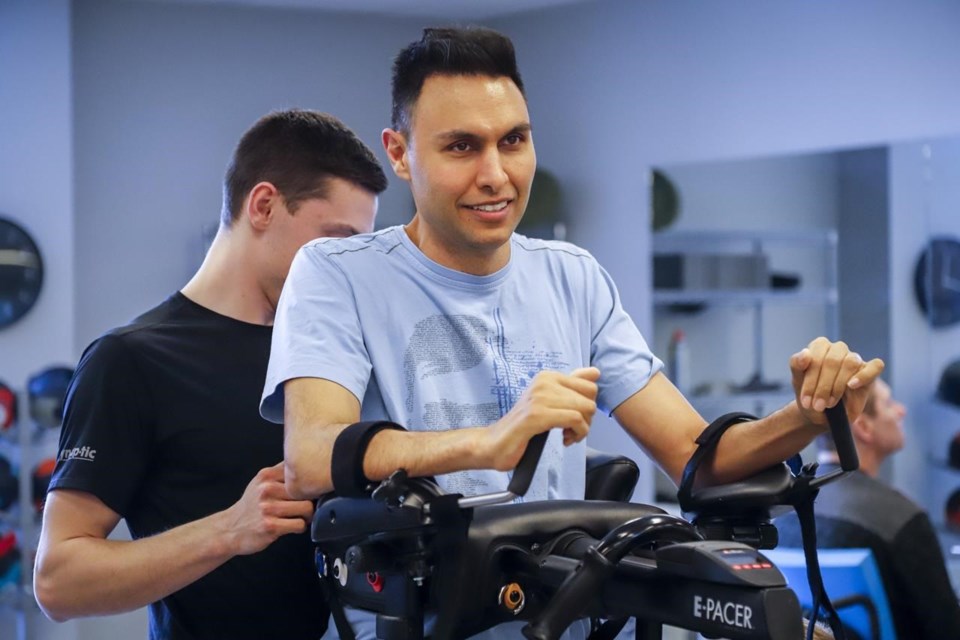CALGARY — A paralyzed Alberta doctor has gone from performing surgery to being a test subject in a research study that could help those suffering from spinal cord injuries.
Dr. Richi Gill of Calgary broke his neck in a freak accident on a boogie board during a family vacation in Hawaii three years ago.
He later travelled to Thailand to have two epidural stimulation implants placed in his lower back. They stimulate nerves mapped out by surgeons and therapists, allowing him to take assisted steps, and help regulate his blood pressure.
But low blood pressure has continued to be a problem.
Aaron Phillips from the University of Calgary's Cumming School of Medicine and Gregoire Courtine at Swiss Federal Institute of Technology created another device that shows spinal cord stimulators can bridge the body’s autonomous regulation system, controlling blood pressure without medication.
The results of their study of the device, called a neuroprosthetic close-loop communication system, were published Wednesday in the science journal Nature.
Gill was the first participant in the study.
"Rather than a pacemaker for the heart it's kind of a pacemaker for the spine," said Gill, 40, in an interview with The Canadian Press.
Gill, who doesn't have any movement or sensation below the neck but does have some use of his arms, said his blood pressure is quite low first thing in the morning or later in the day.
"When that happens, your vision gets a little blurry, you feel a little unwell and you almost have to put your head down in your lap or lie down just to level things and wait until they improve," he said.
"The medications I was taking helped, but they're not perfect and take time to kick in."
Gill said he uses the new device for about an hour each day, and it quickly increases his blood pressure. He no longer needs blood pressure medication.
"Now throughout the day I'm able to work and hang out with the kids," he said.
Phillips said the study found the exact placement on the spine for the stimulator.
"Our device actually works to sense blood pressure, heartbeat and it regulates the dose of stimulation being delivered to those circuits responsible for blood pressure in the spinal cord," he explained.
"Richi was kind of our proof of concept human so after years of work we wanted to see exactly if we could translate this into a human end case."
Phillips said the first clinical phase could start as early as April. If all goes well, the technology could be made available in the next five years.
"We think over the long term having really stable blood pressure will actually reduce the risk of heart disease or stroke. It's a big risk factor. That's actually the major killer of these folks is heart disease and stroke."
Gill, who helped develop Calgary's bariatric surgery program, said he realizes he's become a human guinea pig in the world of neurological research.
"In my past life, I was pretty much involved in research on the other side of things … not as a patient.
"But I'm glad if it can help move some of the science forward."
This report by The Canadian Press was first published January 27, 2021
Follow @BillGraveland on Twitter
Bill Graveland, The Canadian Press



